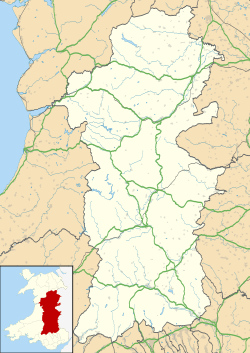Whetstones (stone circle) facts for kids
| Location | Corndon Hill |
|---|---|
| Coordinates | 52°34′16″N 3°01′41″W / 52.57108°N 3.02803°W |
| Type | Stone circle |
| History | |
| Periods | Neolithic / Bronze Age |
The Whetstones were once a stone circle located near Corndon Hill in Wales. A stone circle is a special arrangement of large stones placed in a circle. These ancient sites were built by people long ago, often for ceremonies or to mark important places. The Whetstones are found close to the border between Wales and England, near the village of White Grit. They are also not far from other famous stone circles like Hoarstones and Mitchell's Fold.
Contents
What Are the Whetstones?
The Whetstones are the remains of an ancient stone circle. They are found in a part of Wales called Montgomeryshire, near a hill named Corndon Hill. These circles were built by people living in the Neolithic (New Stone Age) and Bronze Age periods. This was thousands of years ago!
Why Were Stone Circles Built?
People built stone circles for many reasons. We don't know for sure about every circle, but they might have been used for:
- Important ceremonies or rituals.
- Marking the seasons or tracking the sun and moon.
- Gathering places for communities.
- Burial sites or memorials.
The Story of the Whetstones
Sadly, most of the Whetstones stone circle was destroyed a long time ago. This happened in the 1800s. Today, only a few pieces of the original circle are left.
What Did They Look Like?
In 1841, someone wrote about the Whetstones. Even then, parts were missing. But there were three main stones. They were leaning over because the ground was soft and wet. These stones were placed in a circle, all about the same distance apart. The tallest stone was about four feet (1.2 meters) high. It was also about one and a half feet (0.45 meters) thick and three feet (0.9 meters) wide.
How Were They Destroyed?
By 1860, a person named Robert William Eyton, who studied old things, still called the Whetstones a "remarkable monument." However, around 1870, most of the stones were dug up. Some were even broken apart. The stones were then used to build a wall around a field. When the last stone was removed, people saw charcoal and bones underneath. This might mean the site was used for fires or burials.
Finding the Remains Today
Even though most of the circle is gone, you can still see parts of it.
- You can spot the remains from a nearby field boundary.
- You can also see them from the northern top of Corndon Hill.
- Some large stones that were once part of the circle are now in a wall next to a walking path.
These remaining stones are a reminder of the ancient people who lived in Wales thousands of years ago. They show us how important these stone circles were to them.


